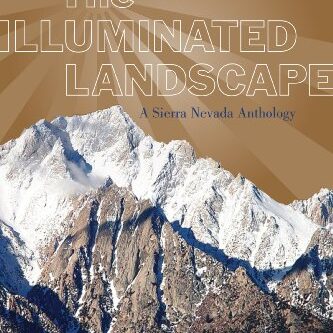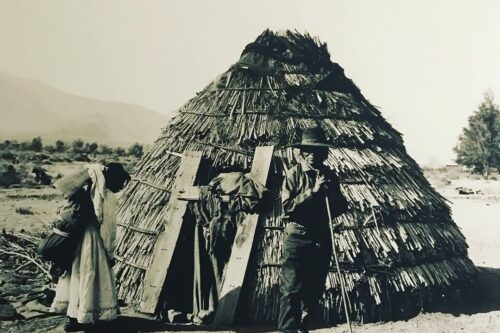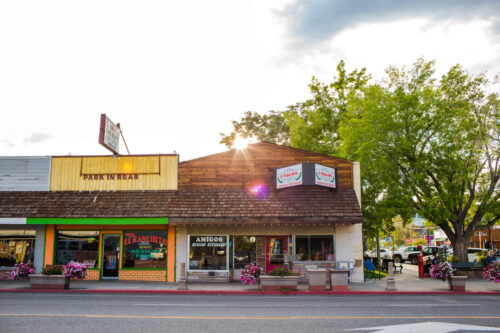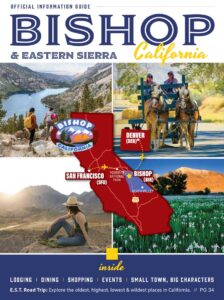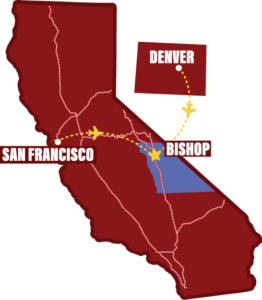Local Lingo and Colloquialisms of the Eastern Sierra
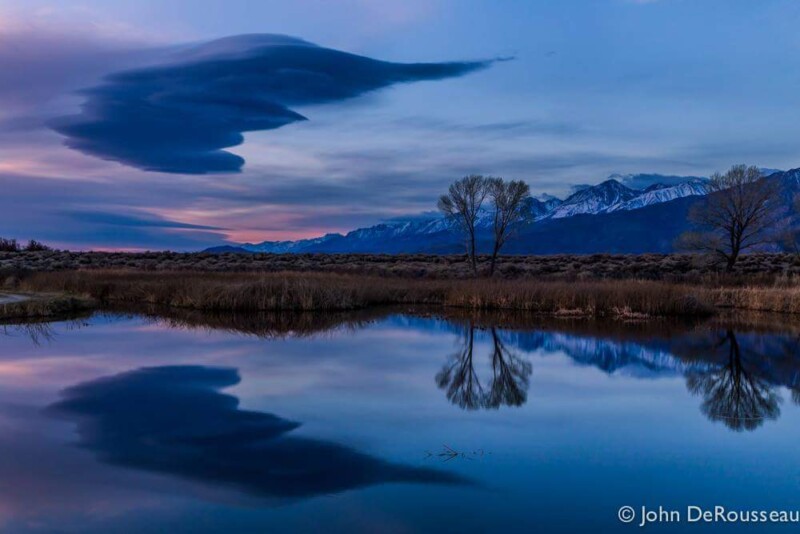
The Eastern Sierra is a lovely and unique place. Like other lovely and unique places, it has a certain language of its own. There are words and names, phrases and pronunciations that are particular and perhaps even peculiar to our part of the world. Some things have a long and rich history while others are simply just so. There are those that are important and others merely amusing.
The questions are asked. What is it, how to say it, what does it mean and where did it come from?
Here’s a short list, certainly not exhaustive, of some of the local words with pronunciations or usage and a little history thrown in.
The Sierra
The Eastern Sierra, the High Sierra, the Sierra Escarpment, and the Sierra Wave are just a few terms that come from the name for the magnificent mountain range that divides California, the Sierra Nevada. Derived from the Spanish words sierra for mountain range or saw and Nevada for snow covered, it literally means the “snow covered mountain range.”
This range of mountains runs for 400 miles, north-to-south, and spans about 70 miles east-to-west. Among its many incredible features, it holds the largest alpine lake in North America, Lake Tahoe; boasts the highest peak in the contiguous United States, Mt. Whitney; and is home to the largest trees on the Earth, the giant sequoia. It is part of the American Cordillera, an almost continuous sequence of mountain ranges running through North America, Central America, South America and Antarctica.
Most of the Sierra Nevada lies in California and contains three national parks, twenty wilderness areas, and two national monuments. It is vast and breathtakingly beautiful.
It is singularly and unambiguously – the Sierra. (Please don’t call it the Sierras.)
Sierra Wave
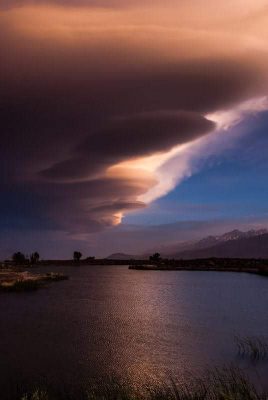
Now that we’ve clarified that, let’s explain the Sierra Wave. There’s no mistaking how to say this, but it may not be what you think it is. It’s not a greeting or a curling body of water. It’s a type of cloud known as wave cloud or lenticular cloud. It requires a certain set of weather conditions and is not uncommon to this and other places around the world.
Here it is called the Sierra Wave. Often during the late afternoon and evening when the winds aloft are strong and stable, the air is moist, and dew point is at the crest of the wave of air, a lens or saucer shaped cloud will form, sometimes with successive layers. If the clouds last until sunset, which they frequently do, the setting sun will tinge the cloud from light yellow to pink to a vibrant blood orange. This is the classic Sierra Wave and it is spectacular.
This spectacle of color in the sky is brief and unpredictable, but the colors on the landscape follow an established pattern in time and place that is almost as predictable as the nightfall after the sunset.
Sabrina (Suh-BRY-nah)
The changing colors of the leaves in Fall is a glorious vision and one of the most remarkable places to see it is up near Lake Sabrina (Suh-BRY-nuh).
The origin of this pronunciation is not known. The lake was named after Mrs. Sabrina (suh-BREE-nuh) Hobbs, wife of C.M. Hobbs first General Manager of California Nevada Power Company, which built the dam. When and why the pronunciation morphed to Suh-BRY-nuh in later years is unclear, but nowadays saying it the local way will earn you kudos for sure.
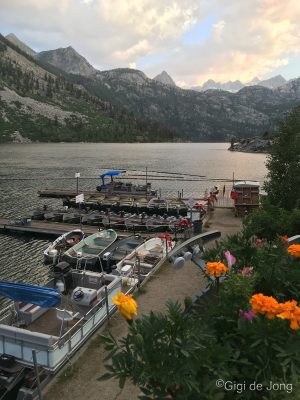
Paiute and Piute (Pah-Ute)
The name Paiute, pronounced Pah-Ute and most commonly spelled with an a, is the name given to three closely related groups of indigenous peoples of the Great Basin. The first people of this area have a long and deep attachment to the land where, historically, the tribes and bands covered a large swath of the western US in the states that are today Arizona, California, Idaho, Nevada, Oregon, and Utah. Here in the Owens Valley the Bishop Paiute Tribe is the fifth largest Native American Tribe in California.
Many place names bear the name Paiute and in a few cases the spelling is given as Piute. There is no known reason for the variance, but when in doubt use the more traditional spelling of Paiute. Visit the Owens Valley Paiute Shoshone Cultural Center at 2300 W Line Street, Bishop, for a deeper understanding of the history and culture of the indigenous people of the Owens Valley.
Mono (MOH-noh)
Mono County was named after Mono Lake, which was so named because of the Mono People, a Native American Paiute tribe that historically lived in the area. It is said the name derived from the name given to them by their western neighbors, the Yokuts, who called them monachie, meaning “fly people.” The abundant fly larvae found at the lake was their staple food and article of trade. The words monachie and monoache were shortened to mona and mono of which Mono became the name of people and the lake.
Mono Lake is a large, shallow saline soda lake situated in Mono County, California. This desert lake lies in a closed basin, which allows no outflow of water, resulting in high levels of salt in the water. Even so it has an unusually productive ecosystem revolving around the brine shrimp that thrive in its alkaline waters. Millions of migratory birds feed on these shrimp, as do the blackflies or alkali flies, the larvae of which formed the basis of the diet of the early Mono people. Mono Lake is geographically and historically unique and wonderful.
Say it like no-no, but yes-yes, come and visit. The Mono Basin Scenic Area Visitor Center is located 1/2 mile north of the town of Lee Vining.

Lee Vining (Lee Vy-ning)
Named for its founder in 1852, Leroy Vining, whose name is pronounced just like the word for which he founded it – mining. More than 70 years later in 1926 the town was laid out by Chris Mattly and unofficially named ‘Lakeview’. When a post office was needed it was learned that another California town already bore the name Lakeview and in 1953 the town was officially named Lee Vining.
The place was also called Poverty Flat, due its unfavorable agricultural conditions, but tourism is now the major economic driver for the town of Lee Vining. It is situated near the foot of Lee Vining Canyon, which is one of only two ice-climbing venues in California.
The Hill
Mammoth Mountain is a lava dome complex that formed from a series of eruptions between 110,000 and 57,000 years ago. The summit is 11,059 ft above sea level (ASL) and the area is now home to one of the largest ski resorts in California. With a vertical rise of over 3,100 ft Mammoth Mountain is definitely a mountain. The local term of endearment, however, for this beautiful mountain is “the hill.”
If you’re out skiing, snowboarding or cycling on Mammoth Mountain then you’ll be held in high regard if you say, “I’m skiing [riding] the hill.” Better yet post a selfie with your status simply, “On the hill.”
Keough (Key-oh)
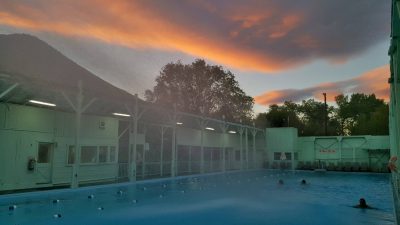
Keough’s Hot Springs is a marvelously soothing and fun hot spring resort that was initially founded by Phillip Keough in 1919. An early pioneer to the Eastern Sierra, Keough was a community leader and owner of the City Market in Bishop at that time. He had a vision to create a first class health resort and during its heyday in the 1920s & 30s it was well supported by both locals and visitors. It remains so today under the ownership of the Brown family of Bishop.
The resort harks back to its bygone era with much of the original wooden structure intact. The two pools, a large swimming and a smaller soaking pool, are the original ones built in 1919 and have a constant flow of fresh mineral water. The large pool, which measures 100’ long by 40’ wide, is great for lap swimming or just splashing and floating. The hot pool is kept at an even 104 deg F and is perfect for easing muscles and soaking away stress. Enclosed on all four sides the pools are protected from the desert wind, but open to the sky above and sun bathing is an option almost year-round. The grounds outside have lovely picnic spots and the resort offers lodging, a campground and RV park.
Keough’s was conceived as a place to get away and get close to nature. Almost 100 years later it still delivers on the promise.
Yosemite (Yoh-SEM-it-tee)
Yosemite National Park. Monumental. Awe-inspiring.
The indigenous people who lived in the valley first called it Ahwahnee (Ah-WAH-nee), meaning “big mouth.” This referred to the massive valley opening that resembled a gaping bear’s mouth. Related to the Northern Paiute and Mono tribes the name given to them by a neighboring tribe, the Miwok, was Yohhe’meti (Southern Miwok) or Yos.s.e’meti (Central Miwok), which meant “those who kill.”
In the mid-19th century when gold was discovered in California conflict between white miners and the indigenous people escalated and the United States Army was sent to suppress Native American resistance.
The name Yosemite is credited to Dr. Lafayett Brunell, the company physician attached to the Mariposa Battalion of the US Army under Major Jim Savage. Brunell was so awestruck by the place that he later wrote a book entitled “The Discovery of Yosemite and the Indian War of 1851.”
He wrote that, “an American name would be the most appropriate;” that “I could not see any necessity for going to a foreign country for a name for American scenery—the grandest that had ever yet been looked upon. That it would be better to give it an Indian name than to import a strange and inexpressive one; that the name of the tribe who had occupied it, would be more appropriate than any I had heard suggested.”
It is ironic that this beautiful national park bears the name of the people that the army was sent to evict.
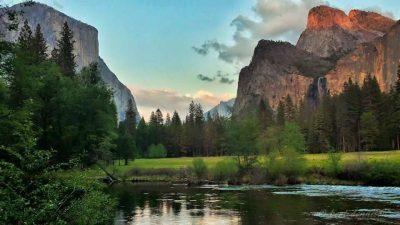
Bishop
The town was named after Bishop Creek, flowing out of the Sierra Nevada: the creek was named after Samuel Addison Bishop, a settler in the Owens Valley. Today the City of Bishop is the only incorporated city and the largest populated place in Inyo County.
Bishop is surrounded by natural beauty and cultural history, safeguarded for future generations. It is a gateway to outdoor adventure and life changing experiences.
Stop by the Bishop Visitor Center at 690 N Main Street for more information on all that there is to find here.
